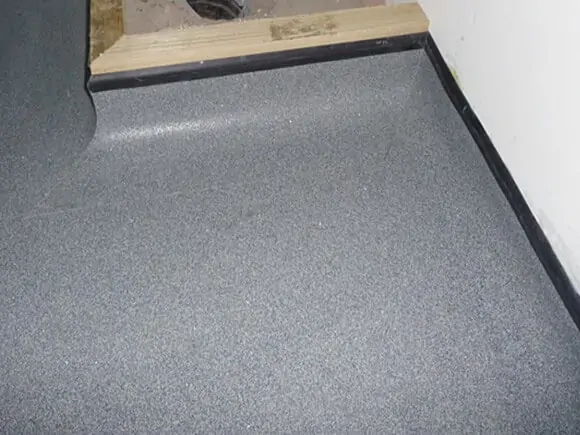Case note: RSL Care Limited v Wallace [2019] QCA 23
A 42 year old residential care worker has successfully sued her employer, RSL Care Limited (the Appellant) for a payout for injuries to her ankle, hip and back arising out of a slip in her workplace.
This was an appeal from a decision of the District Court of Queensland. The appeal was heard on 10 April 2018. Judgment was delivered on 19 February 2019.
The decision at first instance
Ms Jillian Wallace (the Respondent) was employed by the Appellant, as a residential care worker. Her duties included showering residents. The Respondent suffered personal injuries when she slipped and fell on 27 March 2008, while showering a patient who was confined to a wheeled shower chair, while showering.
The Respondent was crouched whilst showering the patient’s legs and as she went to get up, her left foot slipped and she ‘went over’ as her ankle twisted outwards.
The Respondent said that the floors were slippery when they were wet and even more so when they were contaminated with soap or shampoo. While the Respondent made no complaint to anyone in a position of authority about the slipperiness of the floor prior to the incident, other staff gave evidence to the effect that the floor was slippery when wet.
Both parties led expert engineering evidence about the slipperiness of the floor.
The Court preferred the Respondent’s expert evidence from Mr Brendan McDougall of Intersafe, to that of Paul Stephenson of Kinetic Engineers, for the Appellant. Friction tests undertaken by Mr McDougall were confined to wetting the floor surface with water. Testing of the area in which the Plaintiff was working revealed the floor surface to be well below the suggested minimum requirements for the relevant Australian Standard.
The primary judge found that regardless of the cause, the surface where the Respondent was required to work was inadequate and, as a result she slipped, suffering injuries. The Respondent identified that the Appellant ought to have had in place a system of appropriately installing or maintaining the floors of the ensuites. The Appellant did not do so and accordingly, the primary judge found the Appellant negligent.
Issue on appeal
On appeal, the Appellant argued that the primary judge, ‘erred in finding a breach of duty upon an unsound factual foundation concerning the slip standard of the floor ensuite’. The Court of Appeal summarised the Appellant’s argument as follows:
- The primary judge relied upon expert opinion as to the slip resistance of the floor;
- The expert opinion was based upon testing performed five (5) years after the Respondent’s accident; and
- The conclusion that the Appellant had been negligent amounted to speculation and conjecture.
By cross-appeal, the Respondent challenged the primary judge’s award for future economic loss on the basis that it was against the evidence and was manifestly inadequate.
Findings of the Court of Appeal on liability
The Appellant’s appeal was unanimously dismissed by the Court of Appeal, with the judgment written by Justice Bond. The Court determined that the combination of:
- Mr McDougall’s testing results measuring the inadequacy of slip resistance;
- Mr McDougall’s evidence concerning likely explanations for the measured inadequate slip resistance;
- Mr McDougall’s evidence as to the importance of regular testing and the ease of remedying identified concern with slip resistance;
- the evidence as to the Appellant’s failure to comply with manufacturer’s guidelines both before and after the incident; and
- the lay evidence which described a subjective view of the floors at the time of the accident which was consistent with the Respondent’s case and inconsistent with the Appellant’s case,
was such that it was open for the primary judge to find in favour of the Respondent. The Court also concluded that the failure by the Appellant to adduce any other evidence addressing how the flooring was dealt with (before or after the accident) allowed the primary judge to more readily draw that inference.
Findings of the Court of Appeal on quantum
The cross-appeal was also dismissed by the Court. The Court of Appeal noted that while there was a body of evidence supporting a finding of a higher award on future economic loss, such a finding was dependent upon the primary judge accepting the Respondent’s evidence about the impact of her ankle injury. The primary judge found that the Respondent’s evidence concerning her on-going difficulties resulting from her injury could not be accepted as there were misgivings about her evidence. The Respondent’s claim for future economic loss based on notional earning capacity of $1,000 per week net and a residual earning capacity of $660 was not accepted by the Court. Using the 5 per cent tables, the Court allowed the Respondent an ongoing weekly loss of $100. The Court of Appeal was unwilling to disturb that finding. The Respondent was awarded $78,300 for future economic loss.
At trial, the Respondent submitted that she should be entitled to an award of $1,177,570.94. The Appellant submitted that an award in the range of $290,589.64 to $637,887.54 was appropriate.
Payout for back, ankle and hip injuries
The award by the primary judge of $480,784 under the various heads of damage was broken down as follows:
General damages $65,000
Interest $9,300
Past economic loss $201,570
Interest $25,944
Past superannuation $18,140
Future economic loss $78,300
Future superannuation $8,613
Specials $32,460
Interest thereon $5,676
Future pharmaceuticals $3,868
Future GP expenses $22,241
Past paid care $1,680
Future care $7,992.
Costs
Further to a hearing on costs on 21 June 2017, the Respondent was awarded costs of the action on a standard basis. Her application for certification for two counsel was dismissed. Proceedings were commenced in the Court in April 2013. The Appellant was awarded costs thrown away by reason of an adjournment of the trial on 7 November 2016. Both the Appellant and the Respondents appeals were dismissed with costs.
Considerations
This case should be of concern to defendants. It demonstrates that the passage of time will not necessarily be an obstacle to a plaintiff, where:
- the plaintiff has lay and expert evidence in support of their case; and
- the defendant cannot offer a satisfactory explanation as to how a risk was dealt with,
irrespective of the possibility that the hazard may have changed between the date of the incident and the time of testing by an expert.
In this case, the Court of Appeal was unwilling to interrupt the trial judge’s findings on liability and accepted that it was open to the judge to prefer the opinion of an expert as to slipperiness of the surface, over the subjective recollections of lay witnesses.
Can we help?
It is important to understand that this article is not legal advice.
If you have a workers compensation issue that you need help with, get in touch today for an appointment by calling (07) 3067 3025. Want to learn more about how we work? Click here.
To read about some of the successful personal injury and insurance claim outcomes we have achieved for clients, click here.




